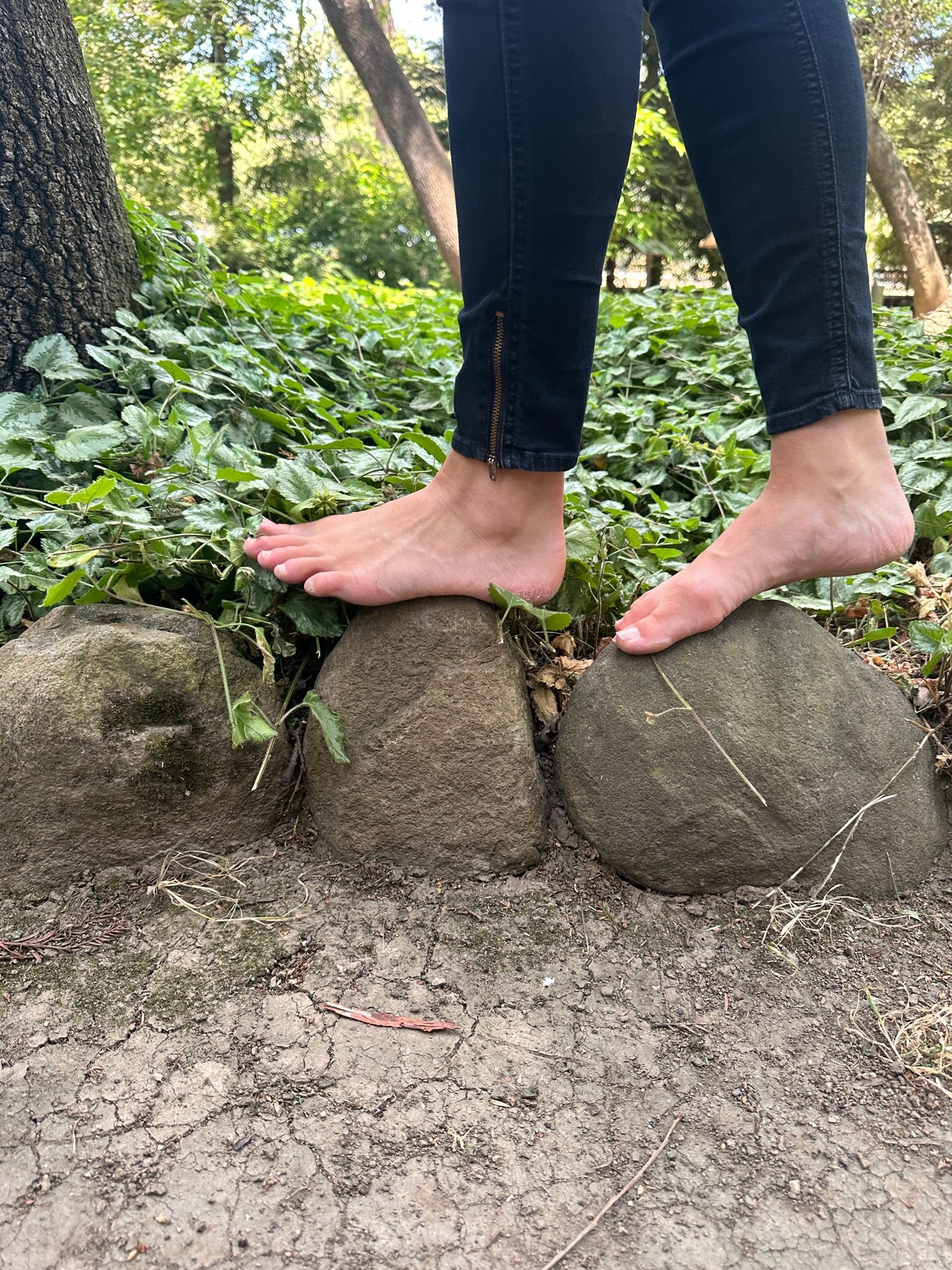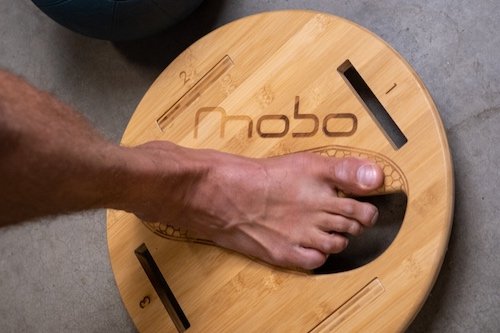Can I go Barefoot if I Have Flat Feet?
Bare feet standing in the grass
Flat feet are widely misunderstood as a barrier to mobility and often blamed as a source of pain and dysfunction. If you have flat feet, going barefoot may be on the laundry list of things you’ve been told you can’t (or shouldn’t) do. For many people, this is pretty frustrating. It can feel like a death sentence or some kind of moral failing, manageable only with orthotics for life.
You may have been told things like:
You need arch support
You need prescriptive orthotics
You overpronate
You shouldn’t run
Feet come in all shapes and sizes. Some have low arches, some have high arches- and everything in between. A flat foot is one in which the arch is low to the ground or even touching the ground. While flat feet can be perfectly functional, sometimes it is a sign of weakness and can compromise foot function.
“Pronation” has become a four-letter word in the fitness industry. But it’s important to understand that healthy foot function includes both pronation (the arch coming closer to the ground) and supination (the arch lifting), depending on where you are in the gait cycle. So, often an arch that defaults to pronation can be a symptom of weakness- not necessarily a terminal dysfunction.
What are Arches for?
The bottom of your foot looks kind of like a tripod. That’s because you have not one, but three arches:
Anterior transverse arch, which goes from side to side through the middle of the foot slightly toward the front.
Lateral longitudinal arch, which travels lengthwise from the ball of the pinky toe to the heel on the outside edge of the foot.
Medial longitudinal arch, which goes from the ball of the big toe to the heel along the inside of the foot.
A pair of bare feet showing their soles
When we talk about the arch, we’re generally referring to the medial longitudinal arch on the inside of the foot. (You know, the part that hurts like heck when you step on a Lego.) In its natural state, the arch is dynamic and moves during the gait cycle to soften and absorb impact force (pronation) and to act as a lever for propelling the body forward (supination). If you’ve ever taken a physics class, you know about potential energy (pulling back a bow and arrow) and kinetic energy (the arrow flying through the air.) The arch of your foot works in a similar way and that’s why it’s built to both lift and lower.
Overpronation is the tendency of the foot to roll further inward than it needs to in order to function as a shock absorber, leading to low back pain, plantar fasciitis, bunions and other lower body discomfort. This is usually what we call flat feet.
Why do I Have Flat Feet?
While the shapes and sizes of feet vary widely, there are a few factors to consider. Here are some of the reasons you might have arches that come a little closer to the ground than your friend’s:
You’re hypermobile
Genetics may play a part
Lack of stability in the feet
Muscle weakness
Inefficient gait patterns
Also, just a note: children’s arches are not fully developed until they are about 7 or 8 years of age. So, it is completely natural for toddler’s to have flat or pronated feet.
Can Flat Feet be Corrected?
Most people who have flat feet are told that they need arch support or orthotics to bring their feet to a more neutral state. A study that compared the use of orthotics to strengthening exercises showed that orthotics made almost no difference, while strengthening showed notable improvement in flat feet.
It makes sense that the support of orthotics can lead to weakness by preventing natural movement from happening. In the same way that any muscle in the body gets stronger by working, the muscles in the feet gain strength when they work properly during gait.
What is one of the best ways to strengthen your feet?
Bare feet walking along large rocks
You guessed it- going barefoot!
Studies on running in minimalist footwear clearly show that less is more. One study performed on 33 runners used an MRI to compare changes from wearing natural footwear versus conventional shoes. After a 12-week program, the runners who used natural footwear with no arch support gained more muscle in their arches, compared to those using arch support.
What exactly makes natural footwear different from conventional running sneakers? Here are some key differences:
Conventional running shoe with thick, cushioned heel
Conventional shoes:
Thick, inflexible soles that prevent movement
Cushion that blocks sensory input
Elevated heel that alters biomechanics
Tapered toe box that squishes the toes together
Vivobarefoot shoe with a thin, flexible sole
Natural footwear:
Thin, flexible sole that allows natural movement
Zero-drop (no elevated heel)
No arch support, so the arch of the foot can rise and fall
Foot-shaped toe box (not tapered, also called a wide toe box) so the toes can spread
These are the qualities in a shoe that allow natural movement to happen. When combined with strengthening exercises like toe yoga and Short Foot, you can improve your gait and increase strength and endurance- even if you have flat feet!
How do I Fix my Flat Feet?
Flat feet can, in many cases, be improved, but they don’t always need to be. Every foot is different, and as long as your feet are functional and pain-free, you may not need any intervention.
If you experience pain or dysfunction, however, here are some ways you can find relief:
Check with a medical provider
A person’s hands holding another’s foot
Before diving straight into natural footwear, check with a medical provider about whether it is right for you. The right provider will be able to help you transition appropriately to prevent injury. While we advocate for going barefoot when possible, we also recognize that in some cases, orthotics are helpful tools. Everyone’s footwear transition is going to look different, and a professional can help guide you. Check out our directory to find someone near you.
2. Strengthening exercises
Foot standing on a Mobo foot and ankle strengthening board
Building strength in your feet takes consistency. Adding exercises like Short Foot and Toe Yoga into your daily routine can help. Our affiliate partner, Gait Happens, has some excellent resources and classes on foot strength.
(*Quick note: Gait Happens is one of our affiliates, meaning we may make a small commission at no additional cost to you. We only recommend brands that align with our mission and add value to your life.)
3. Go Barefoot
Person walks barefoot at the beach
If going barefoot is part of your treatment plan with a medical provider, that’s great! Going barefoot can help improve proprioception so your arches are more responsive to your movement. This improves overall strength and balance, helping you developing more efficient patterns over time.
The Healthy Feet Alliance is here to help. Subscribe to our newsletter to get education and support from the world’s leading experts in foot health.
Ready to check out the top HFA-recommend natural footwear brands? Get started here.









